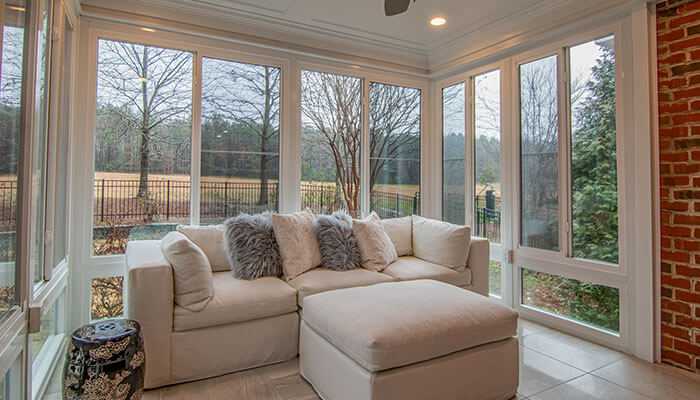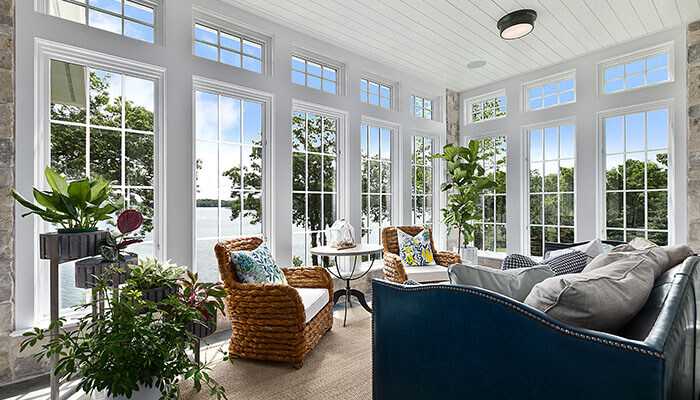Enhanced indoor airflow is the key to having a comfortable, healthy, and energy-efficient home. Air circulation in a home governs the consistency of architectural temperature, the quality of the interior air, moisture control to mention but a few. Though HVAC systems are part of the issue, the kind and position of windows for ventilation may have a strong impact on the degree of success of air movement through an area. The suitable selection of windows in a renovation or a new building is a good tactic of better natural ventilation and less use of mechanical systems.
The effectiveness of indoor airflow starts with the process of introduction and movement of outdoor air of the house. Good location of the windows, usually in combination with good planning of interior design enables cross-ventilation which is a natural process where fresh air flows in one part of the residence and the other part of the house gathers the air outside. Choosing the appropriate style and type of window might make this process very/highly assistive and enhance air exchange in a more symmetric/equitable and less energy-consuming way.
Window Styles That Support Better Airflow
The styles of casement windows and awning windows are some of the most effective styles that are to be promoted in terms of good airflow. Unlike other windows, casement windows open outside with the help of side hinges; this helps the windows to capture sweeping breezes and channel the air towards the living space. Opened the right way they serve as nearly wind scoops. Awning windows that hinge on the top are also effective especially during a rainy day because they will always release a steady flow of air as it is possible to leave the windows open and not have to experience any water.
Air circulation can also be effective through use of sliding and double-hung windows especially in rooms that have advantages of vertical or horizontal air flux. The flexibility in the ability of opening either the bottom or the top sash of the double-hung windows helps provide a variety of choices in terms of the entrance of air and its exit through the room. When done tactically with the consideration of the direction of the prevailing winds, the mixture of various window styles in a house would further develop the ventilation strategy.
The Role Of Window Placement In Airflow Performance
Proper window placement is crucial for maximizing airflow. Ideally windows are supposed to be placed on opposite walls or at opposite corners to make cross-ventilation. This pattern will help to keep one window to allow fresh air to come into the room and go out of the other window thus making the room less stuffy. Having prevailing windows on the upper levels of the homes in multi-level houses allows natural flow of hot air on the upper levels, which ensures better heat balance around the home.
Vertical ventilation may also be enhanced with the help of skylights and high transom windows. By using these sorts of windows, the hot air can escape through the top of a room so that the cooler air forms a siphoning effect and enters through the bottom opens. Incorporated with opening of windows on ground level, this stack effect would generate a natural flow cycle of air needed to maintain a fresher environment inside buildings without further energy consumption.
Benefits Of Choosing Energy-Efficient Window Options

Increased energy should not be paid at the loss of airflow. He/she should select windows that are energy-efficient e.g. a double pane window to be able to regulate the temperatures inside the house and at the same time to have good ventilation. Such windows have been constructed with two sheets of glass and insulating gas between which decreases the transfer of heat and aids climate control. They suit homeowners when a person needs to have fresh air, and to be able to save money in terms of energy consumption.
Custom windows provide an added benefit to avoiding wastage of air and still be able to engage in distinct architectural architecture or peculiar placement of windows. Customized windows can be constructed to serve particular requirements of the airflow when those needs are complicated or the design of the house is unusual. These custom solutions will offer an optimal mix of ventilation, design and insulation that allows enjoying more comfort and looks.
Ventilation Considerations During Home Renovation
It is during the remodeling process of a home that is the best time to redesign and even reposition windows keeping in view the airflow inside a building. The contribution made by window setup used currently to ventilation should also be determined, and if necessary window setup can be adjusted in order to enhance performance. Rooms which seem generally hot or have a lack of air output can be fixed up by installing extra working windows or altering the style to something more airflow appropriate.
Other professionals who should also be brought on board are ones who deal with airflow dynamics because they can advise on strategic changes to be made by homeowners. Installation of additional windows in specific areas to get the best of ventilation can also be advised and done by a well-trained contractor or window expert. There is also an opportunity to promote indoor air quality as well as minimize heat gain or loss through the application of modern technologies in windows, and the use of framing materials.
Final Thoughts
Better indoor air indicates not just playing around with comfort issues but also making the living environment healthier and friendlier towards energy saving. Homeowners can make a huge difference in how their home receives air circulation by simply choosing the proper style, locations and type of window installed. Proper airflow washes out the moisture, makes the air healthier, and is part and parcel of the house’s building to last over the years.
With strategically placed windows that can be opened and closed, use of a two pane window to provide increased insulation in the home and even the placement of specially sized windows in a special and unique pattern to fit an unusual design, careful design of window usage goes far to make a difference in overall home ventilation. The investment in good windows that facilitate the natural airflow will bring long term benefits to the comfort and energy performance.



